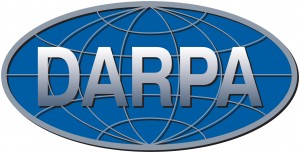On April 2, 2013, President Obama launched the Brain Research through Advancing Innovative Neurotechnologies (BRAIN) Initiative as a bold new research effort to revolutionize our understanding of the human mind and uncover new ways to treat, prevent, and cure brain disorders. The Initiative is a joint program with funding through the Defense Advanced Research Projects Agency (DARPA), the National Institutes of Health (NIH), and the National Science Foundation (NSF).
 In mid-November, DARPA announced two programs as a part of this Initiative: SUBNETS (Systems-Based Neurotechnology for Emerging Therapies) and RAM (Restoring Active Memory).
In mid-November, DARPA announced two programs as a part of this Initiative: SUBNETS (Systems-Based Neurotechnology for Emerging Therapies) and RAM (Restoring Active Memory).
The SUBNETS program asks researchers to develop novel, wireless devices, such as deep brain stimulators, that can cure neurological disorders. From the solicitation:
DARPA seeks to develop a new understanding of complex, systems-based disorders of the brain. A major goal of this effort is to deliver a platform technology for precise therapy in humans living with neuropsychiatric and neurologic disease, including veterans and active duty soldiers suffering from mental health issues. Methods developed through this program will use neural recording and stimulation to close the loop on therapeutic treatment in individuals who receive minimal benefits from currently available treatments. This program could lead to improved knowledge of multiple neural subnetworks of the brain that are involved in disease and illness.
The RAM program calls for a separate wireless device that repairs brain damage and restores memory loss. From the solicitation:
DARPA seeks new methods for analysis and decoding of neural signals in order to understand how neural stimulation could be applied to facilitate recovery of memory encoding following brain injury. Ultimately, it is desired to develop a prototype implantable neural device that enables recovery of memory in a human clinical population.
Emily Underwood of Science, recently spoke with Dr. Geoffrey Ling, deputy director of the Defense Sciences Office at DARPA to discuss these new programs. You can read the full interview here. Please note that if you are potentially interested in the RAM program, there is a Proposer’s Day December 10, with a registration deadline of December 3.










Trackbacks /
Pingbacks